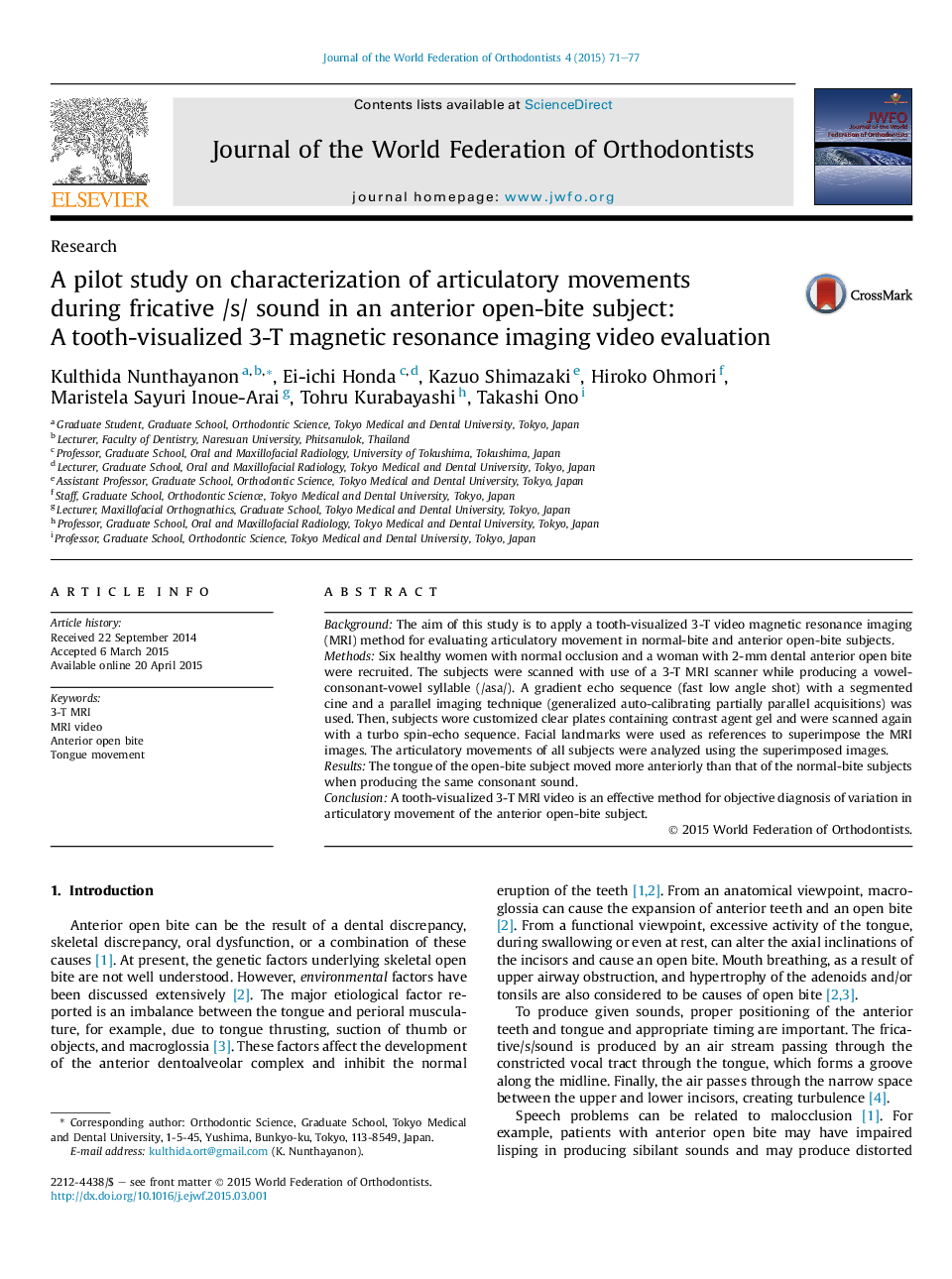| Article ID | Journal | Published Year | Pages | File Type |
|---|---|---|---|---|
| 3484911 | Journal of the World Federation of Orthodontists | 2015 | 7 Pages |
BackgroundThe aim of this study is to apply a tooth-visualized 3-T video magnetic resonance imaging (MRI) method for evaluating articulatory movement in normal-bite and anterior open-bite subjects.MethodsSix healthy women with normal occlusion and a woman with 2-mm dental anterior open bite were recruited. The subjects were scanned with use of a 3-T MRI scanner while producing a vowel-consonant-vowel syllable (/asa/). A gradient echo sequence (fast low angle shot) with a segmented cine and a parallel imaging technique (generalized auto-calibrating partially parallel acquisitions) was used. Then, subjects wore customized clear plates containing contrast agent gel and were scanned again with a turbo spin-echo sequence. Facial landmarks were used as references to superimpose the MRI images. The articulatory movements of all subjects were analyzed using the superimposed images.ResultsThe tongue of the open-bite subject moved more anteriorly than that of the normal-bite subjects when producing the same consonant sound.ConclusionA tooth-visualized 3-T MRI video is an effective method for objective diagnosis of variation in articulatory movement of the anterior open-bite subject.
